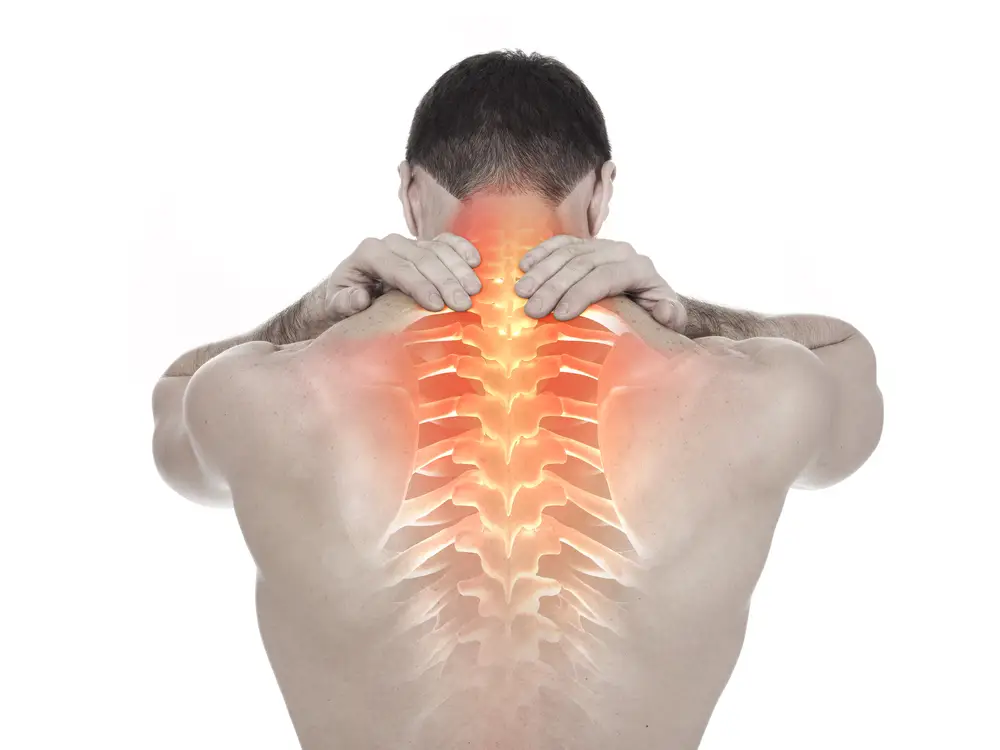[vc_row][vc_column][vc_column_text]According to a recent story in the Wall Street Journal, the most common form of spinal cord problem of Americans over 55 is spinal cord compression. Since this group is a part of the “Baby Boomers,” largest demographic group in U.S. history, this problem is affecting many people and perhaps you are feeling its impact too.
The medical term for spinal cord suppression is cervical spondolytic myelopathy, or CSM. The WSJ notes, “More aging baby boomers are experiencing neck stiffness, arm pain, numbness and weakness in the hands and legs—all signs of degenerative changes in the upper spine that are usually the result of everyday wear and tear. Strenuous activity or sports can exacerbate the damage.”
“The changes over time can lead to a narrowing of the spinal canal and put pressure on the spinal cord. Coupled with repetitive motion, the compression can injure the cord, which in turn can inhibit movement of the hands and impair walking, and may even lead to paralysis.”
The spine specialists at Texas Back Institute have seen numerous cases of this condition and Dr. Theodore Belanger is well aware of the challenges it presents. We asked him to give us some background on CSM.
What Causes CSM and Spinal Cord Compression?
“CSM refers to impingement of the spinal cord in the neck caused by degenerative arthritis,” Dr. Belanger noted. “There are many other things that can compress a person’s spinal cord, such as tumors, trauma, herniated discs, and other conditions, including degenerative arthritis, to which this article is referring.”
“Degenerative arthritis in the neck, and elsewhere in the body, is strongly associated with genetics and aging,” he said. “It is not a single disease that comes in a single form, and therefore there is not a single best treatment that applies to all patients. It also affects men and women equally.”
“In mild forms of the disease, your doctor may recommend simple observation. In severe cases, aggressive surgery may be necessary.” Dr. Belanger noted.
Why are Baby Boomers More Likely to be Affected?
“Because the underlying problem is degenerative arthritis, it affects older people,” he noted. “There are increasingly more people seeking healthcare in general in older age groups as a result of the “Baby Boom”. As the population ages, healthcare providers will see more people with conditions of the elderly, like arthritis and CSM.”
Current research noted in this article suggests the number of CSM surgeries has nearly doubled over the past decade to about 200,000 procedures a year, resulting in $4 billion a year in hospital charges alone. Past studies indicate two thirds of CSM patients improve with surgery, while 15-30 percent of the cases are not successful. Complication rates can be as high as 17 percent.
What are the Symptoms of Spinal Cord Suppression?
“Patients with spinal cord compression can present with different degrees of symptoms and findings,” he notes. “Very mild cases may have vague tingling in the arms or hands, while severe cases on the other end of the spectrum may be essentially quadriplegic (paralyzed in their arms and legs).
“The most common patient symptoms include pain, numbness and/or weakness in the arm(s), difficulty walking due to fatigue and feeling off balance, and electric shock sensations down the back or arms with extreme neck movements. Severe symptoms are generally worked up with imaging of the neck, such as by an MRI. If CSM is confirmed, referral to a spine surgeon is appropriate,” Dr. Belanger said.
What can a Patient Expect with Spinal Cord Suppression Surgery?
“The details depend heavily on the health of the patient, the extent and severity of their CSM, and exactly which procedure is necessary, so it is difficult to generalize,” Dr. Belanger said. “CSM presents with a whole spectrum of severity, and even surgical treatment cannot undo all of the damage done by the disease, especially in more severe cases. I would encourage patients to have a frank discussion with their surgeon about reasonable expectations if surgery is being contemplated.”
Because of the pervasiveness of this condition, there is a three-year study being conducted at 10 large U.S. medical centers. It will compare three surgical techniques and create the national spine outcomes registry to help doctors and patients determine which treatment is best for the individual’s condition and situation.
“There are several surgical options available,” Dr. Belanger notes. “This study is attempting to sort out if there are differences in the outcomes for patients treated with one surgical plan versus another.”
If you have any of these symptoms for spinal cord suppression, or are concerned about other back pain issues, contact us for a consultation.[/vc_column_text][/vc_column][/vc_row]



This has become more important to me lately—not just for looks, but for staying healthy and feeling good. A mix of good skincare, nutrition, and staying active really seems to make a difference over time..